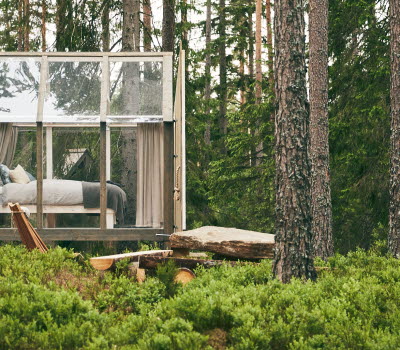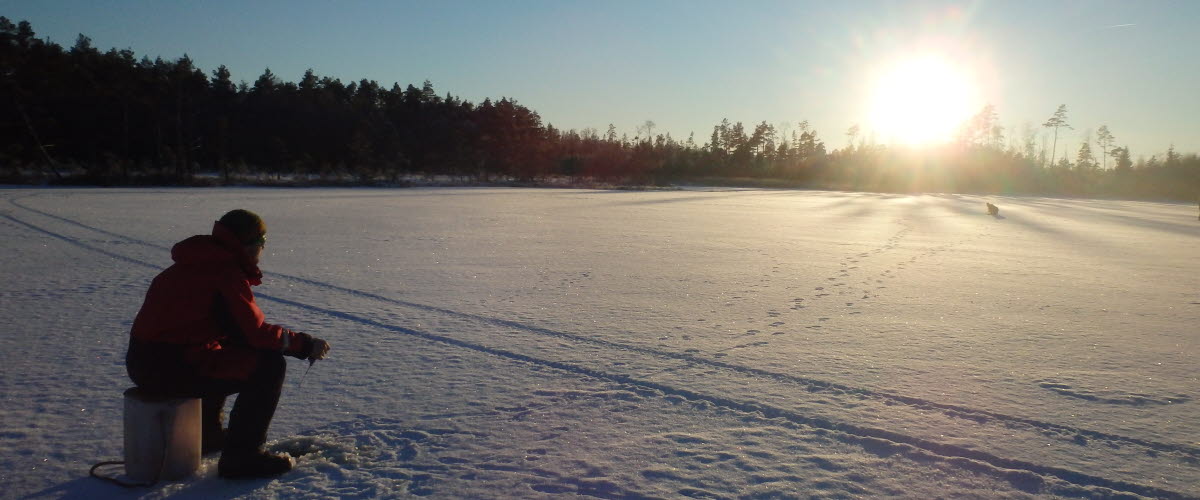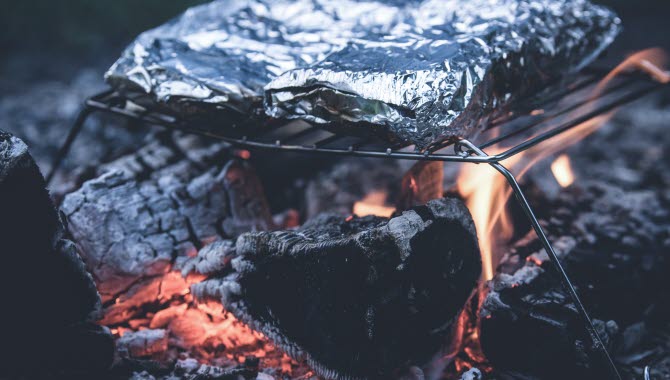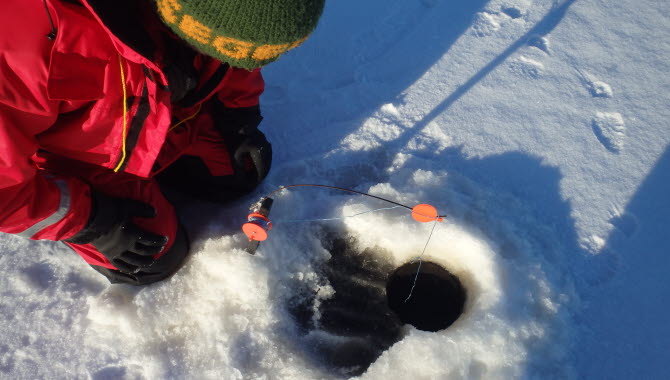Ice fishing- An exiting experience for all ages
Awaiting the start of the ice fishing season! For conditions suitable for ice fishing, temperatures must drop to several degrees below zero for a sustained period of time. Small lakes with few inlets and outlets freeze faster, while larger lakes are often less safe to venture out on. We offer advice about winter fishing and what you need to think about.
A family day out on the ice
Ice fishing is a favourite for all the family once temperatures finally drop. Many of the lakes in our area are small, which means they freeze over quickly. Bring along a flask of hot chocolate and cook sausages over an open fire or bring a camping stove to prepare your meal in the great outdoors. If you are also lucky with the weather, we promise you that this will make one of your best memories this winter!
Photographer: Pexels
Ismete och pimpelfiske
There are two different methods of ice fishing: pike fishing and ice hole fishing. Pike fishing also involves fishing for perch and zander, often using roach as bait. The rods are short and have a strike indicator, consisting of a feather bobber with bells or a percussion cap. The strike alarm is triggered when the fish nibbles on the bait. The fish then takes the bait without feeling any resistance and you go up to the hole, wind in the loose line and yank it up.
Photographer: Emelie Romland
Ice fishing is one of the easiest fishing methods for beginners, as it doesn’t require much expensive equipment. A fishing rod with a line, a couple of flashers and a few hooks is a good start. You also need an ice drill and something to sit on, warm clothes and safety equipment.
Perch are sometimes a bit sluggish in the cold water under the ice, and often hover just above the bottom. It’s a good idea to make several holes until you find out where they are. When the perch starts to nibble, you should quickly pull it up and remove the hook and release the flasher again as there may be a shoal down there, which is attracted by the high tempo.
Handle the fish with care
If you are going to release the fish, it is important that you have a good pair of pliers and some form of hook mat, so that you are able to unhook the fish quickly and release it. If it is several degrees below zero and windy, you should refrain from taking fish out of the water if you are going to release it, as their eyes and skin will get damaged quickly by the cold. Always keep an eye on your fishing rod. If you are too far away and the fish has time to swallow the hook, there is a big risk that it cannot be released.
Ice safety
When you go on the ice, it is important to keep safety in mind. Remember to keep your ice picks easily accessible and never fish alone! There are some simple safety rules to follow:
-
Do not go out on unknown ice, check the ice yourself even if others are already out on the ice.
-
At least 10 cm of black ice is a good measure of when the ice is thick enough for ice fishing.
-
Always wear your ice picks on the outside of your clothing, easily accessible under your chin.
-
Feel free to use floatation garments such as a snowmobile suit, which will also keep you warm if you end up in the water.
-
It’s a good idea for smaller children can wear a life jacket on the ice, it is both warming and increases safety.
-
Always drill / check the ice for thickness every time you move, as it can vary greatly and ice can change quickly.
-
Fish with others, never fish alone on thin ice.
-
Take an easily accessible lifeline.
-
Always have a mobile phone in a waterproof case easily accessible, so that you can quickly call 112 in the event of an emergency.
-
Take spare clothes in a sealed plastic bag, if someone gets wet they need a change of clothing quickly.
-
Never take unnecessary risks, avoid areas with weak ice when moving around, even if it involves a detour.
Two things are particularly important and increase your chances of survival if you end up in the water:
-
A functioning floatation garment
-
A way of alerting emergency services immediately.
The floatation garment can be a regular life jacket, an inflatable vest, floatation overalls or a snowmobile suit. A snowmobile suit increases chances of survival as they also provide warmth if they are tied at the ankles / wrists. A hat, sturdy boots and gloves can also make a big difference. However, regardless of the floatation garment, you will eventually freeze to death or drown if you cannot be rescued in time.
To be able to raise the alarm if you suddenly end up in the water, you need to have your mobile phone charged and easily accessible in a waterproof case.
When raising the alarm, it is important to be able to state your position as accurately as possible. To be on the safe side you can find the coordinates of the fishing lake online, on websites such as hitta.se before venturing out. Also tell a relative or friend where and when you are going out fishing so that they can raise the alarm if you do return home.
Happy fishing!














